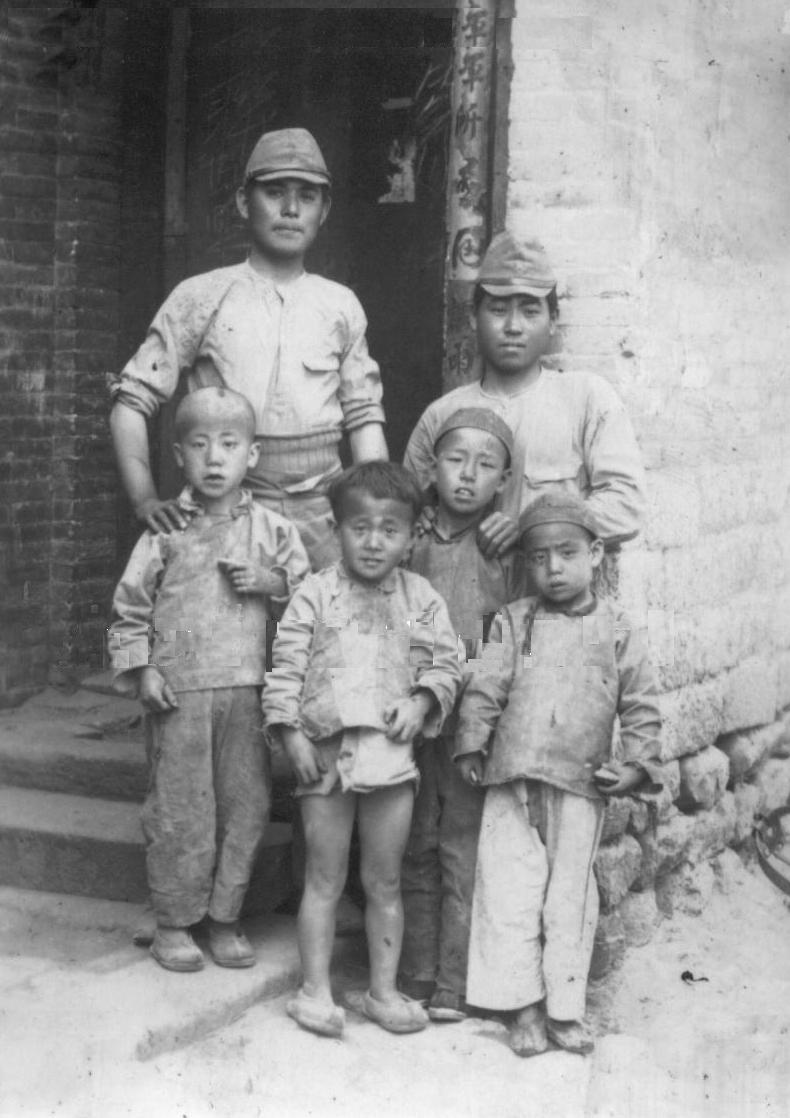
Second Sino-Japanese War : Japanese Soldiers

Figure 1.--Here we see two Japanese garrisin soldiers with four Chinese boys somewhere in China. The photograph is undated, but was probably taken in the late-1930s or early-40s. The body language and the expressions suggest to us that no only do the soldiers and the boys know each other, but that there is a degree of mutual affection among them, although the boys do not seem to know the photographer. The Japanese behaved brutually toward Chinese civilians during the War and committed unbelieveable barbarity. The photograph here suggests that some Japanese soldiers had more reasonable attitudes toward the Chinese. A reader believes it is a staged propaganda photograph.
|
|
There seems to be no indication that the Japanese soldiers in Chuina were commited to the task of securing China for the Japanese Empire. If any had reservations, there is little of no evidence of it. That is not too surprising and not all that unusual at the time. That us unusual is the behvior of the Japanese soldiers in China. Japanese savagery in China defies understanding. Many first hand accounts exist as to what occurred in Nanking to both POWs and civilians. But Nanking was only one city. This barabaric behavior ocurred throughout China during the Second Sino-Japanese War (1937-45). It is difficult to know to what extent this was ordered by the High Command or was the action of the individual soldiers. Surely both was involved. But it is undeniable that part of the policy of the Japanese military was to intimdate the Chinese to destroy Chinese morale. And Japanese soldiers were no well supplied. They were exopected to largely live off the land. This expalins seizures of food. It does not, however, explain their barbaric behavior. There appear to be virtually no limits placed on Japanese soldiers. Rape, torture, mutalation, murder, and canabalism were all permitted. The Japanese Army did not take Chinese POWs. They were all simplly killed shortly after surrendeing, and often in brutal ways such as being used in bayonet practice, beheaded, burried alive, or in myriad other ways. Given the extensive nature of the attrocities perpetrated in China, it appears to have been something both ordered by the High Command and in the nature of the individual Japanese soldier. The Japanese did not have industrial gas chambers like the Germans, but the actual body count is probably higher. Yet there are images showing Japanese soldiers exhibiting a degree of affection toward Japanese boys. (We are guessing that Chinese parens did not allow theur girls any where near Japanese soldiers if they could prevent it.) Here we are not talking about propaganda photography, but what looks like snap shots taken by the soldiers. We do not know how to explain this given the behavior if the Japanese in China (figure 1). Perhaps these children were from families cooperating with the Japanese. Hopefully other readers will also have some insights to offer. The aspect of Japanese behavior that most mistified the Americans in the Pacific War was theie unwillingness to surrender. This was not apparent in China because the Japanese were on the offensive throught the War, except for the final months.
CIH

Navigate the CIH World War II Section:
[Return to Main Japanese invasion of China page]
[Return to Main World War II Chinese-Japanese War page]
[Return to Main military style page]
[Biographies]
[Campaigns]
[Children]
[Countries]
[Deciding factors]
[Diplomacy]
[Geo-political crisis]
[Economics]
[Home front]
[Intelligence]
[POWs]
[Resistance]
[Race]
[Refugees]
[Technology]
[Totalitarian powers]
[Bibliographies]
[Contributions]
[FAQs]
[Images]
[Links]
[Registration]
[Tools]
[Return to Main World War II page]
[Return to Main war essay page]
Created: 3:35 PM 11/23/2013
Last updated: 10:37 PM 11/23/2013



